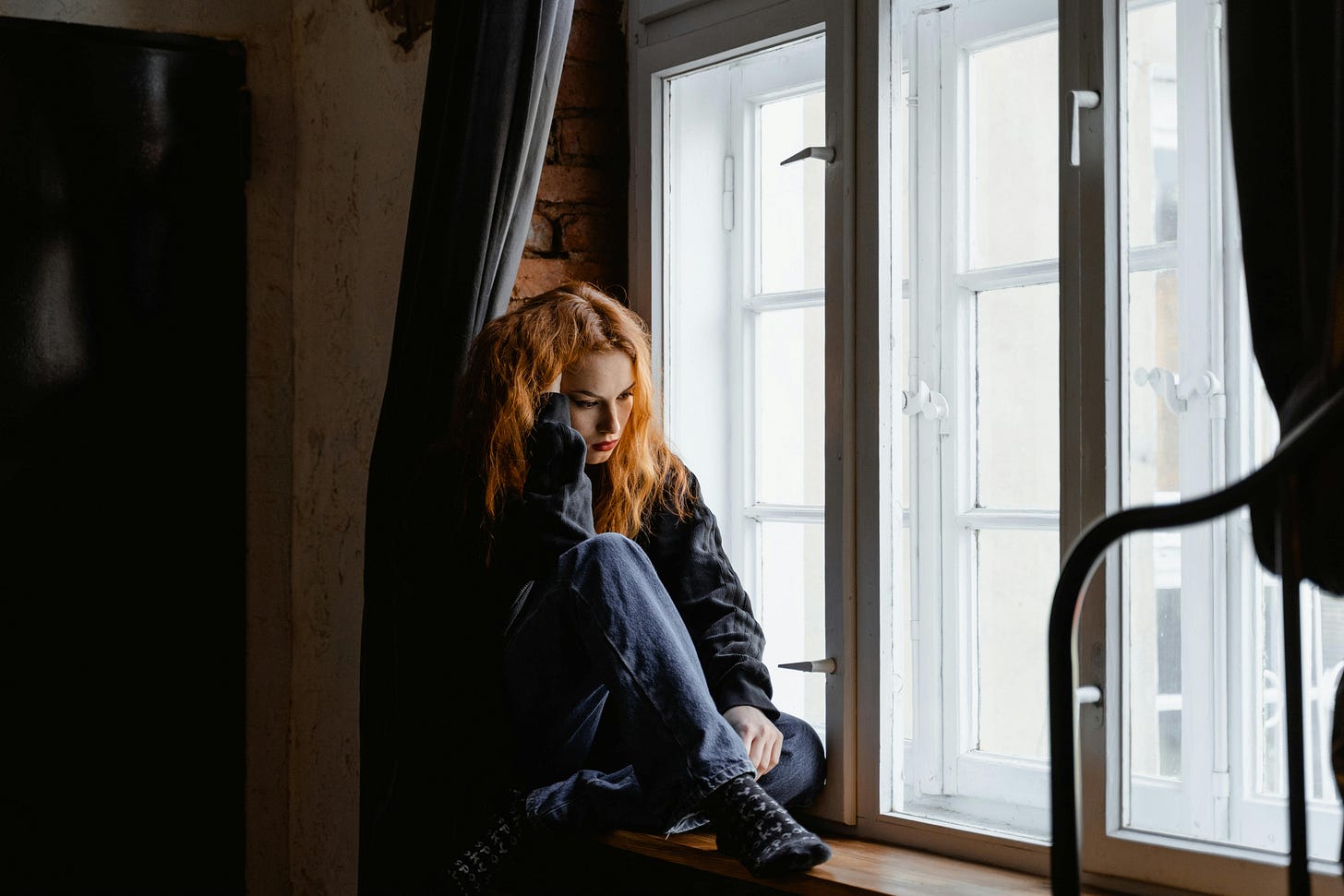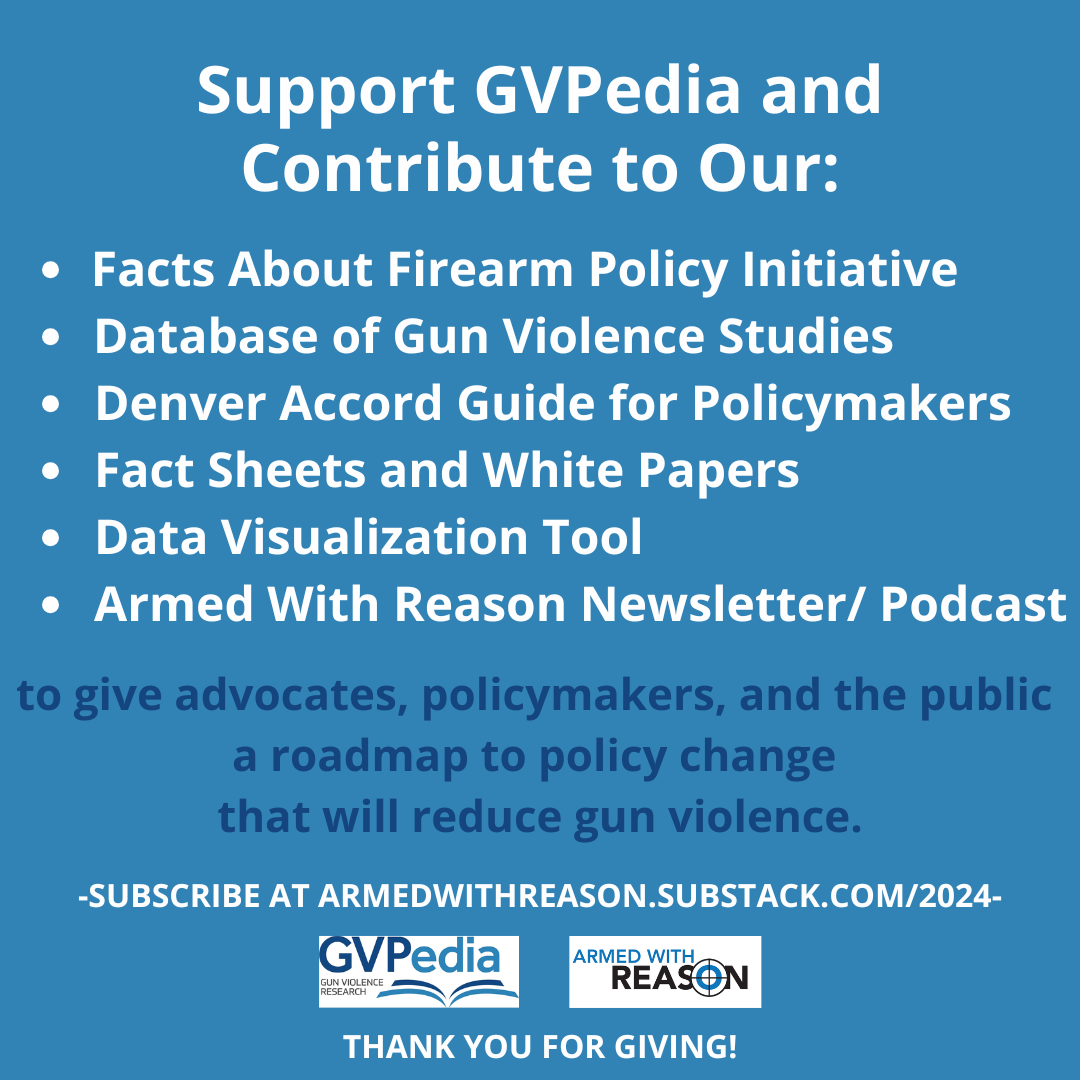Safety Without and With Guns
Deploying a firearm should only be considered a last resort
By: Devin Hughes
Guns don’t make you safer. That’s the conclusion of overwhelming academic research spanning decades.
A gun in the home doubles the risk of homicide and triples the risk of suicide. Defensive gun use is rare, not beneficial for society on average, and even when a gun is deployed, it provides the same protective benefit as doing nothing. Guns provide a high amount of additional risk for no real protective benefit.
Unfortunately, this reality is sometimes viewed as divisive and something that will alienate gun owners, and therefore is avoided in favor of a bigger political tent. Conversely, it can also sometimes be used to demonize and exclude gun owners as inherently irresponsible and a threat.
However, we should instead center the reality of guns making us less safe, while still maintaining open and constructive dialogue with gun owners about safety.
It is crucial to have a two-step conversation: first providing the evidence that guns don’t make us safer; and then what alternatives for safety exist, as well as what existing gun-owners can do to minimize risk. Responsible safety training should incorporate each aspect of this conversation, not just provide a list of what not to do or focus solely on firearms training.
While I’ve covered the disinformation behind the “guns make us safer” myth extensively, today I want to focus on the second conversational step.
Safety Without Guns
Get a dog
Dogs aren’t just man’s best friend, they are also often effective protectors and deterrence. Studies find that neighborhoods with more dog-owning households have lower levels of crime. This is due to would-be burglars or assailants not wanting to run the risk of fighting off a dog, but also because dog owners frequently take their pets on walks. This means more eyeballs that could catch signs of trouble or suspicious activity in a neighborhood. The presence of dogs then provides a dual benefit: direct protection and community-level deterrence.
Invest in home security
Relatively simple home security measures such as locks, alarms, and lights can substantially reduce the risk of burglary. Additionally, when these are combined, the protective benefits become greater than the sum of their parts.
It is important to realize that the vast majority of home invaders are not looking to inflict bodily harm on people inside the home. Straightforward precautions can deter such events from ever happening in the first place. This is actually the opposite of firearms, which are actually an inducement to thieves given their portability, lack of tracing capacity, and high-resale value.
Explore non-lethal weapons and martial arts
There are a substantial number of less lethal or non-lethal weapons available that can serve as an alternative to firearms, though regulations vary substantially across states (and ironically, there tend to be tougher laws governing non-lethal weapons than guns). Weapons such as pepper spray, tasers, impact weapons, and tactical flashlights have evidence demonstrating their effectiveness when used by police and civilians alike.
Additionally, martial arts training or even relatively basic self-defense classes can provide the ability to scale the use of force appropriately for a threat while de-escalating a situation. Practices such as Brazilian Jiu-Jitsu are even designed to protect against a larger and stronger assailant. All of these options avoid adding a lethal weapon that would likely escalate a situation and increase the odds of lethality for everyone involved.
A relative lack of research
It is important to note that, unlike the plethora of research on guns, there is a relative dearth of studies about alternatives to make us safer. Sadly, this is yet another way in which our culture’s obsession with firearms has made us less safe — by deprioritizing more promising, less lethal alternatives. None of the above measures are the proverbial silver bullet that guns are falsely sold as, but when combined will provide real protective benefits.
Safety With Guns
Store guns locked and unloaded
The safest home is a home without a firearm. The next-safest home is one with guns that are locked in safes, with ammunition stored separately. This is especially crucial if there are kids in the home.
Safe storage also prevents thefts, which contribute approximately 400,000 guns to the streets annually. Locking your guns securely away saves lives and prevents future crime. If you still feel the need for rapid access to a firearm in a self-defense scenario, there are biometric safes that can open in mere moments.
There is no excuse anymore for not responsibly storing firearms.
Regularly drill
All too frequently, guns are sold to first-time buyers as a lifesaving device that you don’t have to give a second thought to until danger arises. Then you point and shoot. Easy. Except, it is not remotely easy.
If you own a gun but have never fired one, you need to go to an in-person course (or better yet dispose of the gun safely) with live-fire instruction. Then, if you are still serious about potentially using a gun for self-defense, go to the range regularly. Then recognize that shooting a stationary target in a well-lit room is only the first step in a long training regimen to be prepared for the messy realities of a real-life self-defense scenario — where the target isn’t standing still, lighting is likely bad, you don’t have infinite time to aim, your adrenaline is through the roof which greatly impacts the ability to shoot properly, and so on.
Guns are not a one-and-done purchase, they are a lifetime commitment to training and risk mitigation. If you aren’t prepared for that responsibility, you have no business owning a gun for self-defense.
Recognize risk
Part of being a responsible gun owner is being clear-eyed about the risks firearms pose to you and your loved ones rather than hiding from the data or believing you are uniquely unaffected by statistics.
Pretending guns are merely inanimate objects like anything else, acting like they are toys, or using them as a political/fashion statement are all symptoms of irresponsibility. Guns aren’t playthings, they are lethal tools. The power to end a life with a single finger twitch is a grave responsibility, and must be treated as such.
What Both Non-Gun Owners and Gun Owners Can Do
Emphasize De-Escalation
Self-defense isn’t about “winning” combat, it is about avoiding injury. The best self-defense scenario is when no defensive action is ever needed.
A massive segment of gun violence is the result of escalating feuds and arguments. Making sure those arguments never boil over into violence is the top priority. Even in a defensive gun use scenario, deploying a firearm should only be considered a last resort, after all other options have been exhausted.
Those who are most eager to use a gun to save the day are the last people who should have one.
Build Community
A community that watches out for each other is one of the best defenses against gun violence. This applies to preventing both violent crime and suicides.
An assailant is much less likely to attack two people or a crowd of people than a lone target. People who look out for each other can notice the signs of depression, and make sure that weapons are safely secured away from someone who may pose a risk to themselves in a moment of crisis. Even without formal Extreme Risk Protection Orders, communities can create informal networks to help those in crisis remove lethal means.
We are well aware that in these highly divisive and chaotic times, the seemingly quick fix of buying a gun — compared to the long-term suggestions herein — can seem more instantly gratifying, and certainly more convenient. But facts still matter. Numbers tell the story of the dangers of owning a gun, and it is important to arm yourself with that reality too.
If you or someone you know is struggling or in crisis, contact the 988 Suicide & Crisis Lifeline, which provides 24/7 free and confidential support. Call or text 988 or visit 988lifeline.org.
Photo by MART PRODUCTION; via Pexels.




